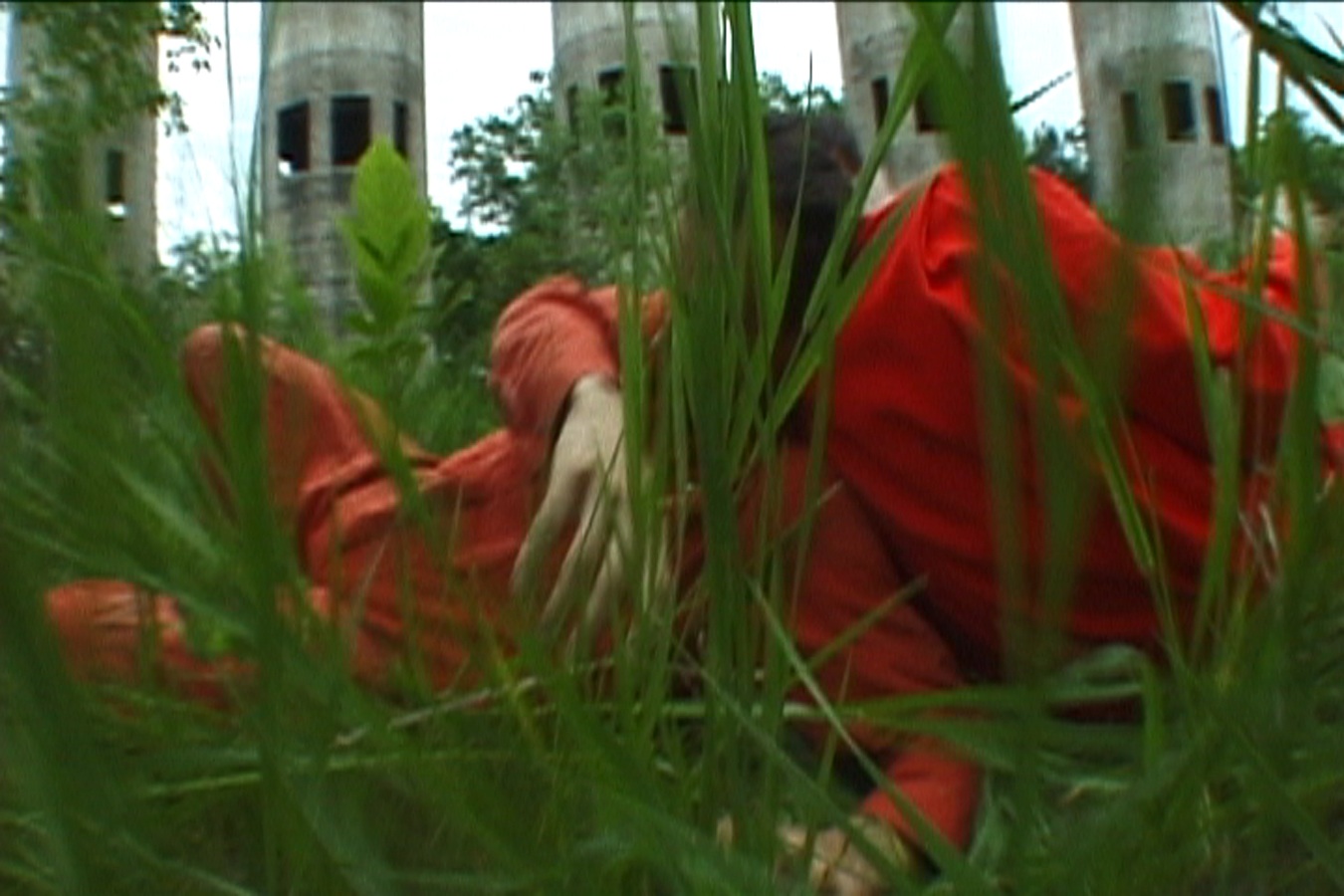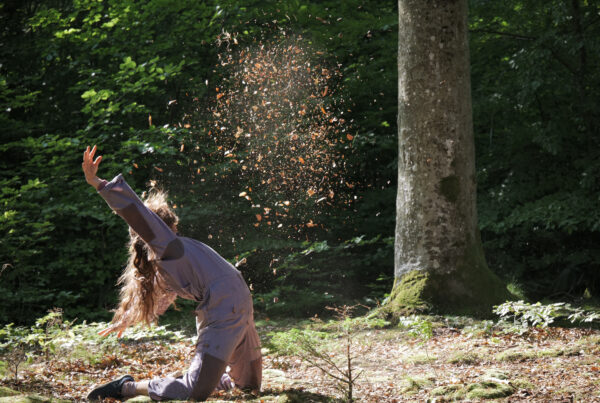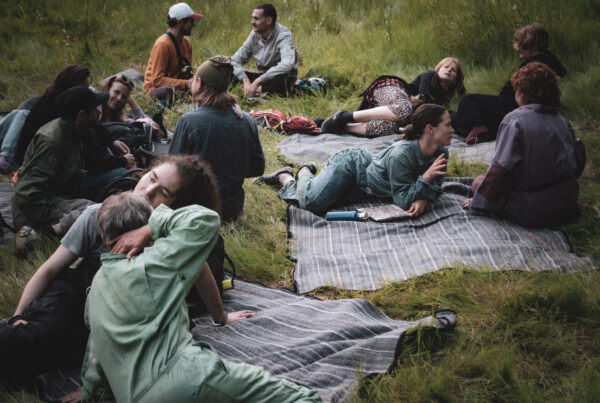Dancehouse Melbourne
Melanie Kloetzel joins Siobhan Murphy in a conversation about site, screen, materiality and the screendances curated in material moves. Melanie is a settler artist, scholar and educator located in Treaty 7 Territory on Turtle Island (Canada). Siobhan is a settler of Celtic descent currently living at Geboor (Macedon) on the unceded lands of the Wurundjeri Woi Wurrung people. She makes screendance and publishes writing in the field of dance studies.
Excerpt
Siobhan: In terms of the filmmaker’s point of view, it’s a switch in perspective, when they’re not just seeing the dance, they’re seeing the whole situation. This brings us to talk about how a reciprocal relationship with site can be rendered not only by the dancer’s engagement with materials but by the camera person’s choices. You’ve already touched on this by mentioning how the dancer might exit a frame, and if the camera stays with that frame, we get to see what remains, what ripples outward from the dance.
Melanie: This is really clear in Olive Bieringa’s work “Plant”. She obviously has a long history of making site work. And in “Plant”, as a camera person, she is allowing her knowledge of and engagement between her body and the site to come through the camera in a completely different way than you see in other films. Usually, it’s the body that’s on the other side of the camera that is the most important in dance films. But in “Plant” the camera person’s body is just as important. For instance, in this one shot, she’s doing this circling activity, with the camera panning 360° over and over again; the camera might come across a body in the frame, but it doesn’t feel that important. It’s almost as if the dancers’ presence in that shot is incidental and that kind of interaction was fascinating to witness. Of course there are other moving shots and following shots in ‘Plant’, but often the body’s on the edge of the frame – still almost secondary to the experience. Those techniques were fascinating to see in a film that’s really quite old. In some ways, it’s a film that’s very difficult to watch. There’s no music that’s helping us, and it’s 10 minutes long, and we’re getting used to shorter and shorter dance films all the time. And Olive even severs the link between visuals and sound, matching sound and visuals from different shots. This feels quite disorienting for the viewer – almost like the bodies themselves had been displaced or severed from society in a way, becoming like strange remnants or leftovers that Olive (as camera person) would kind of catch falling or running through the frame. Of course, this sense of displacement is also highly impacted by the editing, but it feels like the camerawork is what drove that in a totally different direction. The dialogue that developed between the camera person and the place felt like it almost became the main activity.
Siobhan: I completely agree and this is why I included it despite the low resolution. I love the way it prioritises the dance behind the lens as a sensory entryway to the site.
Melanie: You could even hear the noises the camera person was making. Normally you would edit that out. But by leaving it in, you can’t hide or deny the presence of the camera or the body of the camera person. By being very upfront about their presence, Olive was able to create a potent dialogue with the random events happening around her.
Siobhan: Olive talks about the footage as being raw and that it took her a while to understand what it was. It was experimental, the shooting of it, and then ultimately it had a feeling of documentary war footage. The camera is not precious; some takes are imbued with a sense of risk, that the camera could get wet or fall. The wild, experimental approach is what makes the film stand out for me so much.
Melanie: I like that you decided on putting something like that back to back with Shantel Liao’s “Little Farewells”, where the camera is doing nothing! It’s actually just a stable single shot, which may seem off-putting, but is critical for the success of that film. Viewing it straight after “Plant” shows the differences in how place can be seen as a collaborator: the very disparate choices made for these films in terms of both camera work and editing support the commentary on place that each filmmaker wanted to make. With “Little Farewells”, the single static shot gets uncomfortable, maybe even boring, but that’s kind of the point, right? I mean, the camera is chained in place. That’s exactly how we felt during the pandemic lockdowns. We couldn’t move; at times, we couldn’t even exit or leave a singular space. So the decision to chain the camera in place was a painful decision, but powerful. And, then add to that, whatever is in the shot at the very beginning is what’s going to be in the shot the whole time. So both in terms of the camerawork, and editing of course, there is the idea that there’s no room to move, a haunting reminder of the reality that we experienced during the pandemic.
Siobhan: The camera is also seconded by the static TV screen which is on some kind of weird news loop so that between these two still frames you just have no options, really increasing the claustrophobia. Melanie: Both “Plant” and “Little Farewells” are highly successful in terms of techniques of integration, but they produce very different kinds of outputs. And when you see them back-to-back, it really demonstrates that there isn’t just a single choice in terms of camera work or editing for place-based filming. This is also why curating for order is so impactful; it encourages viewers to think about the differently emplaced body – in other words, how different situations, places and experiences can be communicated quite clearly to a viewer through the use of different camera and editing techniques.



